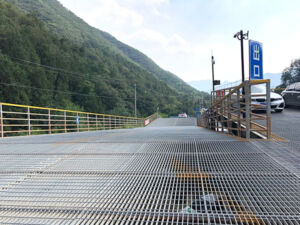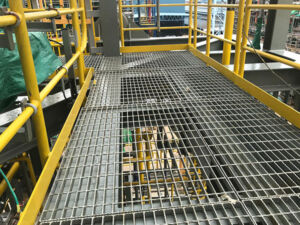Understanding the load capacity of steel grating is essential for ensuring the safety and functionality of various industrial and commercial installations. Steel grating is widely used in platforms, корабельные палубы, and drainage covers, and its ability to bear loads depends on several factors including the type of grating, the material grade, and the installation method. This article on Steel Grating Load Capacity delves into these aspects in detail, offering insights on how to calculate load capacity, what factors influence it, and how to choose the right grating for your specific needs.
The load capacity of steel grating is determined by several key factors, the most important of which is the material used. Typically, steel grating is made from mild carbon steel or stainless steel, each offering different strengths and properties. Mild carbon steel grating is popular for its cost-effectiveness and strength, making it suitable for heavy-duty applications. On the other hand, stainless steel grating is known for its corrosion resistance, making it ideal for environments where exposure to moisture or chemicals is a concern. The choice of material directly impacts the grating’s load-bearing ability and should be carefully considered based on the specific requirements of the application.”,
Another critical factor affecting steel grating load capacity is the design and spacing of the bearing bars. Steel grating typically consists of bearing bars and cross bars that form a grid-like structure. The load capacity is influenced by the size, Широко используется в промышленности электростанции, and spacing of these bearing bars. Gratings with thicker bearing bars and closer spacing generally offer higher load capacities, making them suitable for heavier loads. Conversely, gratings with wider spacing and thinner bars are lighter and more economical but are limited to lighter loads. It is important to select a grating design that matches the expected load to ensure safety and durability.

The span or the distance between the supports also plays a crucial role in determining the load capacity of steel grating. The longer the span, the lower the load capacity, as the grating has to support the weight over a larger area. Conversely, reducing the span increases the load capacity, as the weight is distributed over a smaller area. When planning an installation, it is essential to consider the span in relation to the expected load to ensure that the grating can safely support the weight. Using supports to reduce the span or selecting a grating with higher load-bearing capacity can help in managing the load distribution effectively.
The method of installation also impacts the load capacity of steel grating. Grating can be secured to the supporting structure using welding, clips, or bolts, and each method offers different levels of load-bearing capability. Welding provides the strongest attachment, making it ideal for installations that will bear heavy loads over time. Clips and bolts offer flexibility and ease of installation but may reduce the overall load capacity if not properly secured. It is important to follow manufacturer guidelines and industry standards when installing steel grating to ensure that it can safely support the intended load.
In addition to understanding the factors that influence load capacity, it is also important to regularly inspect and maintain steel grating to ensure it continues to perform effectively. Over time, factors such as corrosion, wear, and damage can reduce the load capacity of the grating. Regular inspections should include checking for any signs of rust, deformation, or loose fastenings that could compromise the grating’s integrity. Timely maintenance, such as applying protective coatings or replacing damaged sections, can help preserve the load-bearing capability and extend the lifespan of the steel grating.

In conclusion, determining the Steel Grating Load Capacity involves considering multiple factors including the material, design, span, and installation method. By understanding these elements, you can select the appropriate grating for your project and ensure that it meets the required load specifications. Proper installation and regular maintenance are also essential to maintaining the grating’s load capacity over time. By following best practices, you can ensure that your steel grating installation remains safe, прочный, and capable of supporting the necessary loads for years to come.

